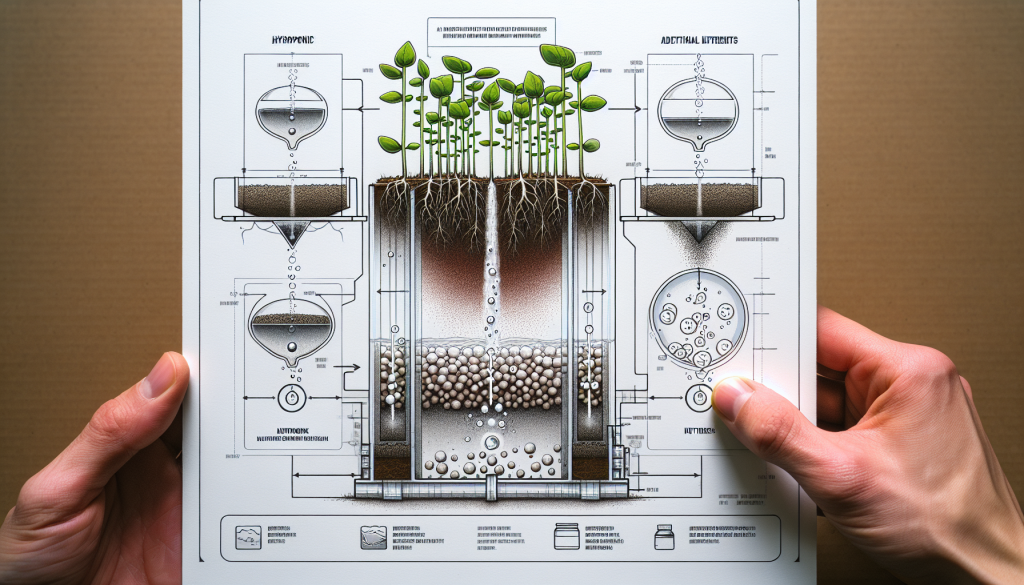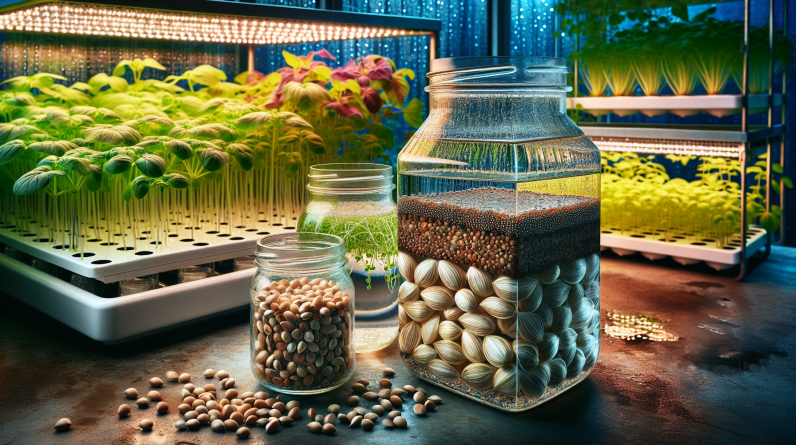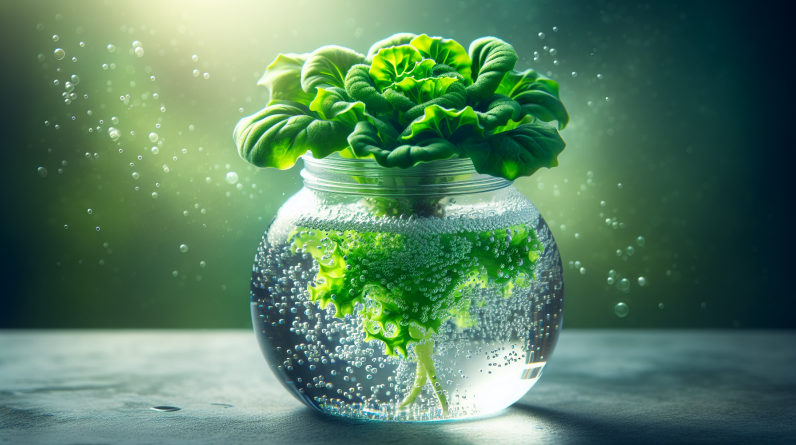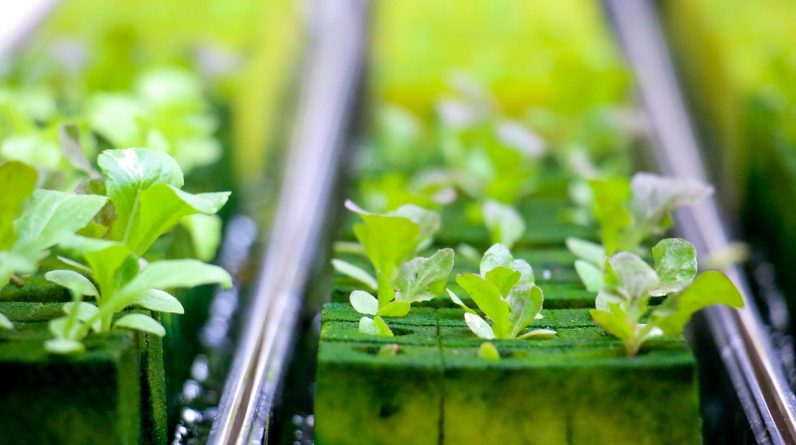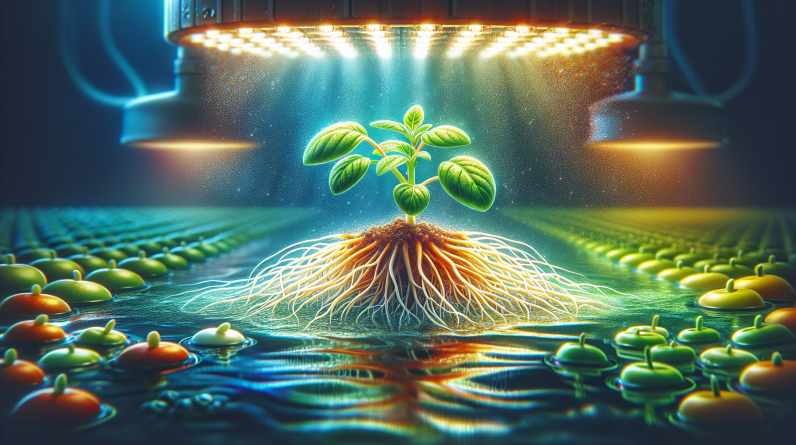
Are you curious to know if hydroponic seedlings require nutrients to thrive? Well, the answer might surprise you. Hydroponic farming has gained popularity in recent years due to its efficient use of water and space. However, many beginners often wonder if seedlings grown in a nutrient-rich solution would also require additional supplements. In this article, we will explore the nutritional needs of hydroponic seedlings, debunking any misconceptions and providing you with the essential information to ensure your hydroponic garden flourishes.

This image is property of images.pexels.com.
Hydroponic Seedlings
Hydroponic seedlings are plants that are grown in a soilless environment, using water-based solutions that contain all the necessary nutrients for their growth. This method of cultivation has gained popularity in recent years due to its numerous advantages over traditional soil-based gardening. In this article, we will explore the concept of hydroponic seedlings, their nutrient requirements, and the challenges and benefits associated with their cultivation.
Definition
Hydroponic seedlings refer to plants that are grown without soil, where their roots are submerged in a nutrient-rich water solution. This method of cultivation allows for increased control over the plant’s environment, resulting in faster growth rates and higher yields compared to traditional soil-based gardening.
Advantages
One of the main advantages of hydroponic seedlings is the ability to optimize plant growth by providing the ideal conditions for nutrient uptake. In a hydroponic system, the plants have direct access to water and nutrients, allowing them to take up these essential elements more efficiently. This results in faster growth rates and healthier plants.
Another advantage of hydroponics is the ability to save water. In traditional gardening, a significant amount of water is lost through evaporation and runoff. In a hydroponic system, water is recirculated, reducing water waste and making it an eco-friendly option.
Hydroponic seedlings also offer the advantage of space efficiency. As they do not require soil, plants can be grown closer together, maximizing the use of available space. This is especially beneficial for urban gardeners or those with limited gardening areas.
Challenges
While hydroponic seedlings offer numerous advantages, there are also some challenges associated with this method of cultivation. One of the main challenges is maintaining the proper nutrient balance in the nutrient solution. Plants require specific ratios of macronutrients (such as nitrogen, phosphorus, and potassium) and micronutrients (such as iron, zinc, and copper) for optimal growth. Achieving and maintaining this balance can be a delicate task that requires regular monitoring and adjustments.
Another challenge is the risk of disease and pest infestations. In a soilless environment, plants may be more susceptible to certain pests and diseases. Proper sanitation and preventive measures must be taken to ensure the health and wellbeing of the hydroponic seedlings.
Additionally, setting up a hydroponic system may require an initial investment in equipment and materials. From growing containers to nutrient solutions and lighting systems, the cost of setting up a hydroponic system can be higher compared to traditional soil-based gardening.
Despite these challenges, with proper knowledge and management, hydroponic seedlings can provide a highly rewarding gardening experience with exceptional results.
The Concept of Nutrients
Understanding the concept of nutrients is crucial when it comes to hydroponic seedlings. Nutrients are essential elements that plants require for their growth and development. In a hydroponic system, these nutrients are provided through the nutrient solution, which is a carefully balanced mixture of various elements.
Importance of Nutrients
Nutrients play a vital role in every aspect of a plant’s growth. They are responsible for various processes, including photosynthesis, root development, and the production of flowers and fruits. Without an adequate supply of nutrients, plants would struggle to survive and thrive.
In a hydroponic system, the availability and balance of nutrients are even more critical due to the absence of soil, which usually acts as a reservoir of essential elements. It is essential to provide the necessary nutrients in the correct proportions to ensure healthy and vigorous growth of hydroponic seedlings.
Macronutrients
Macronutrients are the primary nutrients required by plants in large quantities. These include nitrogen (N), phosphorus (P), and potassium (K). Nitrogen is essential for promoting leaf and stem growth, phosphorus aids in root development and flowering, while potassium is crucial for overall plant health and nutrient uptake.
Maintaining an optimal balance of macronutrients is vital for healthy plant growth. A deficiency or excess of any of these nutrients can have detrimental effects on the development and productivity of hydroponic seedlings.
Micronutrients
In addition to macronutrients, plants also require micronutrients in smaller quantities. These include elements such as iron (Fe), manganese (Mn), zinc (Zn), copper (Cu), and others. Although required in smaller amounts, micronutrients are just as crucial for plant growth as macronutrients.
Micronutrient deficiencies can manifest through various symptoms, such as yellowing of leaves or stunted growth. It is essential to provide a well-balanced nutrient solution that includes all necessary micronutrients to ensure optimal growth of hydroponic seedlings.
Hydroponic Nutrient Solutions
Hydroponic nutrient solutions are formulated mixtures that provide all the necessary nutrients for the growth and development of plants in a hydroponic system. These solutions can vary in composition and are available in different types to cater to the specific needs of different plants.
Composition
A hydroponic nutrient solution typically consists of water, macronutrients, micronutrients, and pH adjusters. The macronutrients are usually present in the form of salts, such as calcium nitrate, potassium phosphate, and potassium sulfate. Micronutrients are often supplied in chelated forms to ensure their availability to the plants.
pH adjusters, such as phosphoric acid or potassium hydroxide, are added to maintain the pH of the nutrient solution within the optimal range for nutrient uptake. The pH of the nutrient solution plays a crucial role in the availability and uptake of nutrients by the plants.
Types
There are various types of hydroponic nutrient solutions available in the market, each formulated to meet specific plant requirements. These include one-part solutions, two-part solutions, and specialized nutrient blends for different growth stages or plant types.
One-part solutions are pre-mixed nutrient solutions that contain all the necessary elements in a single bottle. These are convenient and suitable for beginners or those who prefer a simpler approach to nutrient management.
Two-part solutions consist of separate bottles of nutrients that need to be mixed in specific ratios before application. These solutions offer more flexibility and control over nutrient ratios, allowing for fine-tuning based on plant requirements.
Specialized nutrient blends are designed for specific growth stages or plant types. These blends often have varying ratios of macronutrients and micronutrients to cater to the specific needs of plants during different stages of growth.
Benefits
Using a hydroponic nutrient solution offers numerous benefits for the cultivation of hydroponic seedlings. One of the main benefits is the ability to provide a well-balanced and readily available source of nutrients for the plants. In a soilless environment, plants rely entirely on the nutrient solution for their growth, making it crucial to provide a comprehensive and balanced nutrient supply.
Another benefit is the ability to adjust and tailor the nutrient solution to the specific needs of different plant species or growth stages. By fine-tuning the nutrient ratios, it is possible to optimize the growth and development of hydroponic seedlings, resulting in healthier and more productive plants.
Hydroponic nutrient solutions also offer the advantage of convenience and ease of use. With pre-mixed or two-part solutions, it becomes straightforward to provide the necessary nutrients without the hassle of measuring and mixing individual components.
Overall, hydroponic nutrient solutions are an essential component of successful hydroponic seedling cultivation, providing a reliable and efficient source of nutrients for optimal plant growth.
Hydroponic Seedlings Nutrient Requirements
Understanding the nutrient requirements of hydroponic seedlings is crucial for maintaining their health and promoting proper growth. Several factors can affect the nutrient needs of hydroponic seedlings, and it is essential to address these factors to optimize nutrient delivery.
Factors Affecting Nutrient Needs
Several factors can influence the nutrient needs of hydroponic seedlings. These include plant species, growth stage, temperature, light intensity, and nutrient solution pH. Each of these factors plays a role in determining the optimal nutrient concentrations and ratios for plant growth.
Different plant species have varying nutrient requirements, and it is essential to research and understand the specific needs of the plants you are cultivating. The growth stage of the plants also affects their nutrient requirements, with higher nutrient needs during the vegetative stage and different requirements during flowering and fruiting.
Temperature and light intensity can impact nutrient uptake and utilization by plants. Higher temperatures and intense light can increase nutrient requirements due to accelerated growth rates. It is important to monitor and adjust nutrient levels accordingly to ensure optimal growth under varying environmental conditions.
pH is another critical factor that affects nutrient availability. Different nutrients have different levels of availability at different pH levels. Monitoring and adjusting the pH of the nutrient solution is vital for ensuring proper nutrient uptake by hydroponic seedlings.
Stage-Specific Nutrient Requirements
Hydroponic seedlings have specific nutrient requirements at different growth stages. During the vegetative stage, plants require higher levels of macronutrients, particularly nitrogen, to promote leaf and stem growth. Phosphorus and potassium are also essential during this stage for root development and overall plant health.
As the plants transition to the flowering and fruiting stage, their nutrient requirements shift. During this stage, plants require lower levels of nitrogen and higher levels of phosphorus and potassium to support flower and fruit development.
It is important to adjust the nutrient solution composition and ratios based on the growth stage of the hydroponic seedlings. Providing the appropriate nutrients at each stage ensures optimal growth and development, resulting in healthier and more productive plants.
Common Deficiencies
Despite careful monitoring and nutrient management, nutrient deficiencies can still occur in hydroponic seedlings. Recognizing and addressing these deficiencies promptly is crucial for preventing further damage and ensuring healthy plant growth.
Some common nutrient deficiencies in hydroponic seedlings include:
- Nitrogen deficiency: Symptoms include pale or yellowing leaves, stunted growth, and weak stems.
- Phosphorus deficiency: Symptoms include dark green or purple leaves, stunted growth, and poor flowering or fruiting.
- Potassium deficiency: Symptoms include yellow or brown leaf edges, weak stems, and poor fruit quality.
- Calcium deficiency: Symptoms include curled or distorted leaves, blossom end rot in fruits, and blackened or decayed root tips.
- Magnesium deficiency: Symptoms include yellowing between leaf veins, leaf curling, and poor plant growth.
Regular monitoring of hydroponic seedlings and their nutrient solution, along with addressing any deficiencies promptly, is essential for maintaining their health and promoting optimal growth.
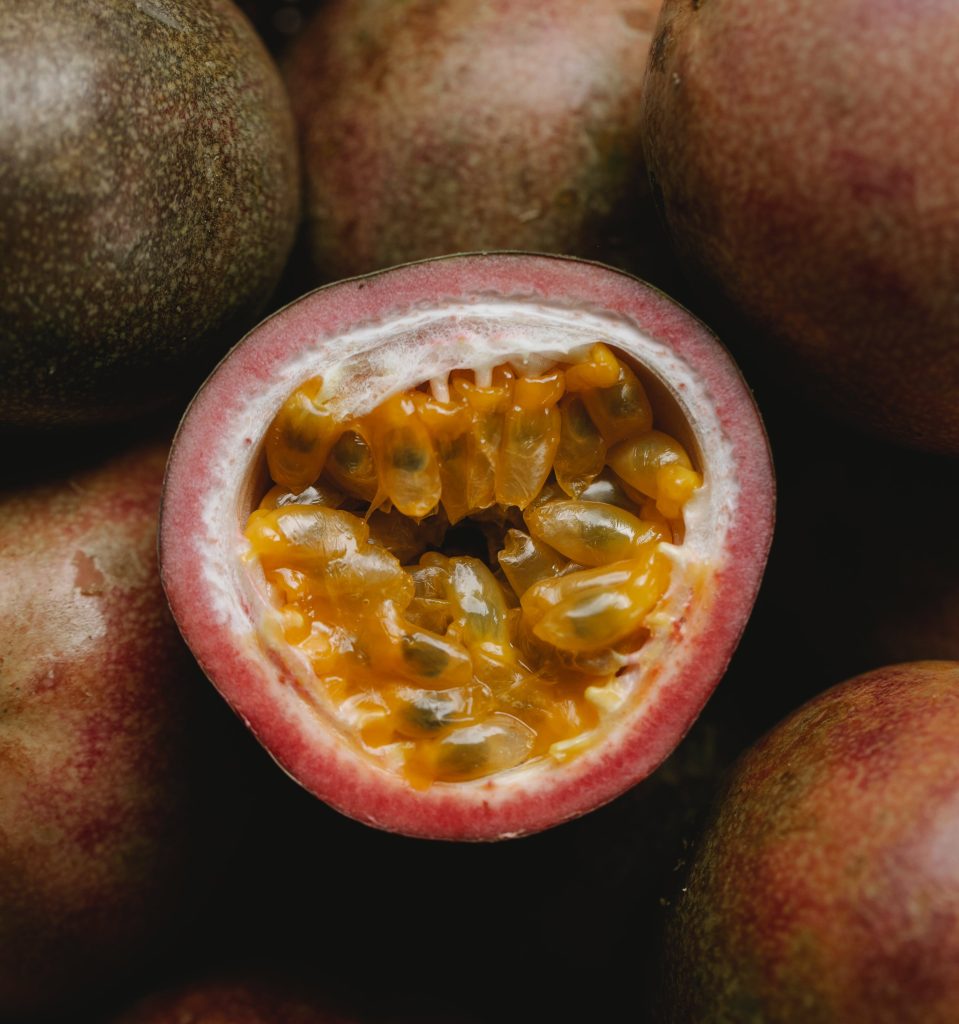
This image is property of images.pexels.com.
Nutrient Delivery Methods
In a hydroponic system, there are various methods for delivering nutrients to hydroponic seedlings. These methods differ in how the nutrient solution is supplied to the plants and can have an impact on nutrient uptake and overall plant health.
Static Solution Culture
Static solution culture, also known as deep water culture, is one of the simplest and most popular nutrient delivery methods in hydroponics. In this method, the roots of the hydroponic seedlings are submerged in a nutrient solution that is continuously oxygenated. The plants absorb the necessary nutrients directly from the solution.
This method offers the advantage of simplicity and ease of setup. However, it requires careful monitoring of oxygen levels in the nutrient solution to prevent root rot and ensure healthy plant growth.
Flood and Drain
The flood and drain method, also known as ebb and flow, involves periodically flooding the growing medium or root zone with the nutrient solution and allowing it to drain out. This cycling of the nutrient solution provides oxygen to the roots and helps prevent waterlogged conditions.
Flood and drain systems can be automated using timers or manually controlled. They offer the advantage of maintaining oxygen levels around the roots while providing nutrients. However, proper drainage and monitoring of the nutrient solution level are essential to prevent overwatering or nutrient buildup.
Nutrient Film Technique
Nutrient Film Technique (NFT) is a method where a thin film of nutrient solution continuously flows over the roots of the hydroponic seedlings. The nutrient solution is pumped from a reservoir and flows down a sloped channel, bathing the roots in a thin film of nutrient-rich water before returning to the reservoir.
NFT systems offer the advantage of providing a constant supply of oxygen to the roots while ensuring the nutrient solution is not stagnant. However, careful monitoring and adjustment of the flow rate and nutrient solution composition are necessary to prevent drying out of the roots or nutrient imbalances.
Each nutrient delivery method has its own set of advantages and considerations, and the choice of method depends on various factors such as the size of the growing area, plant species, and personal preferences.
Balancing Nutrient Solution
Maintaining the proper balance of nutrients in the hydroponic nutrient solution is crucial for the health and growth of hydroponic seedlings. There are several aspects to consider when balancing the nutrient solution, including monitoring pH levels, adjusting nutrient levels, and flushing the system.
Monitoring pH
The pH of the nutrient solution plays a crucial role in nutrient availability and uptake by the plants. Different nutrients are more or less available at different pH levels, and it is important to maintain the pH within the optimal range for nutrient absorption.
Regular monitoring of the pH using a pH meter or test kit is essential. The optimal pH range for most hydroponic seedlings is typically between 5.5 and 6.5, although specific plant species may have slightly different preferences. Adjustments to pH can be made using pH adjusters, such as phosphoric acid or potassium hydroxide, depending on whether the pH needs to be lowered or raised.
Adjusting Nutrient Levels
Regular monitoring of nutrient levels in the nutrient solution is essential for maintaining the proper balance. Nutrient levels can be monitored using electrical conductivity (EC) meters or by conducting regular nutrient solution analyses.
Adjustments to the nutrient levels can be made by adding appropriate nutrient concentrates or by diluting the nutrient solution with water. Adjustments may be necessary due to changes in plant requirements, differences in water quality, or nutrient deficiencies or excesses.
Understanding the specific nutrient requirements of the hydroponic seedlings and regularly monitoring and adjusting nutrient levels accordingly is crucial for healthy and productive plant growth.
Flushing the System
Periodic flushing of the hydroponic system is essential to prevent the buildup of excess salts and maintain the health of hydroponic seedlings. Flushing refers to the process of replacing the nutrient solution with fresh, clean water to remove any accumulated salts or nutrient imbalances.
Flushing should be done on a regular basis, depending on the specific needs of the plants and the accumulation of salts in the system. It is essential to drain and replace the nutrient solution carefully, ensuring that all traces of the old solution are removed.
Flushing the system not only helps prevent nutrient imbalances but also improves overall plant health and nutrient uptake, leading to healthier and more productive hydroponic seedlings.

This image is property of images.pexels.com.
Organic Nutrient Options
While conventional hydroponic nutrient solutions typically consist of synthetic salts, there are also organic nutrient options available for those who prefer an organic approach to hydroponics. Organic nutrients offer several benefits and can be a viable option for cultivating hydroponic seedlings.
Benefits of Organic Nutrients
One of the main benefits of organic nutrients is their lower environmental impact. Organic nutrients are derived from natural sources and are typically produced using sustainable practices. This reduces the carbon footprint associated with conventional nutrient production.
Organic nutrients also tend to have a slower release rate compared to synthetic nutrients. This can help reduce the risk of nutrient imbalances and provide a more gradual and sustained supply of nutrients to the hydroponic seedlings.
Furthermore, organic nutrients can improve the overall quality of the crop. Organic cultivation methods focus on soil health and microbial activity, which can result in improved flavor, aroma, and nutritional content of the harvested produce.
Sources of Organic Nutrients
Organic nutrients can be derived from various natural sources. Common sources include compost, worm castings, kelp, fish emulsion, and other organic materials. These materials are typically processed and formulated into concentrated organic nutrient solutions or solid fertilizers.
Using organic nutrient sources often requires additional steps, such as brewing compost teas or extracting nutrients from organic matter. These nutrient sources need to be carefully prepared and applied to ensure they are compatible with the hydroponic system and won’t clog or cause issues with pumps or irrigation systems.
Considerations for Organic Hydroponics
While organic nutrients offer numerous benefits, there are some considerations to keep in mind when using organic methods in hydroponics. Organic nutrients tend to have lower nutrient concentrations compared to synthetic salts, which may require higher dosages to meet the nutrient requirements of hydroponic seedlings.
Another consideration is the potential for microbial activity in the nutrient solution. Organic materials can provide a conducive environment for microbial growth, which may require additional measures to prevent clogging or contamination of the hydroponic system.
Careful research and consideration should be given to the specific nutrient requirements, availability, and compatibility of organic nutrients with the hydroponic system to ensure optimal results.
Hydroponic Seedlings and Nutrient Management
Proper nutrient management is essential for the health and productivity of hydroponic seedlings. Monitoring nutrient levels, recognizing deficiencies, and troubleshooting imbalances are crucial aspects of nutrient management in hydroponic systems.
Importance of Monitoring
Regular monitoring of the nutrient solution and hydroponic seedlings is essential to ensure the proper balance of nutrients and prevent nutrient deficiencies or excesses. Monitoring can be done through visual observation of the plants, measuring electrical conductivity (EC), pH levels, and performing nutrient solution analyses.
Monitoring helps identify any early signs of nutrient deficiencies or imbalances, allowing for timely adjustments and interventions. It also provides valuable insights into the nutrient requirements and patterns of the hydroponic seedlings, enabling better nutrient management and optimization of their growth and productivity.
Recognizing Nutrient Deficiencies
Nutrient deficiencies can manifest through various symptoms, and recognizing these signs is crucial for addressing them promptly. Common signs of nutrient deficiencies include yellowing or browning of leaves, stunted growth, leaf curling or distortion, poor flowering or fruiting, and unusual discoloration.
Each nutrient deficiency has specific symptoms associated with it, and it is important to consult nutrient deficiency charts or references to accurately diagnose the deficiency. Once identified, appropriate measures can be taken to rectify the deficiency and restore healthy growth.
Troubleshooting Nutrient Imbalances
In addition to deficiencies, nutrient imbalances can also occur in hydroponic systems and can have adverse effects on plant growth. Imbalances may result from incorrect nutrient ratios, inadequate nutrient uptake, or accumulation of excess salts.
To troubleshoot nutrient imbalances, it is essential to carefully analyze the symptoms and determine the specific nutrient(s) causing the issue. Making appropriate adjustments to the nutrient solution, whether through dilution, supplementation, or pH correction, can help restore the proper nutrient balance and promote healthy growth.
Regular monitoring, diagnosing deficiencies or imbalances, and promptly addressing them are essential for successful nutrient management in hydroponic seedlings.
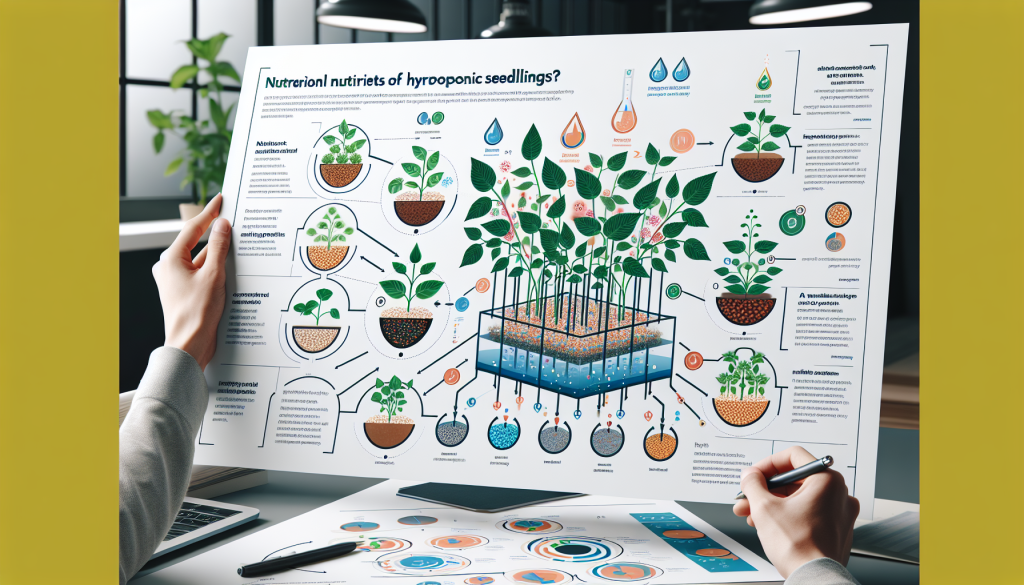
Common Misconceptions
There are several common misconceptions surrounding the nutrient requirements of hydroponic seedlings. These misconceptions can lead to improper nutrient management and hinder the growth and productivity of hydroponic plants.
Hydroponic Plants Require Less Nutrients
One common misconception is that hydroponic plants require fewer nutrients compared to their soil-grown counterparts. While it is true that hydroponic plants may be more efficient in nutrient uptake, they still require the same essential elements for their growth. Nutrient deficiencies can occur in hydroponic seedlings if the nutrient solution is not adequately balanced and adjusted.
Excessive Nutrients Aid Growth
Another misconception is that providing excessive nutrients will promote faster growth and higher yields. However, excessive nutrient levels can actually lead to nutrient imbalances, toxicity, and detrimental effects on plant health. Maintaining the proper balance of nutrients is crucial for optimal plant growth and productivity.
Replacing Nutrients Regularly is Unnecessary
Some may mistakenly believe that once the nutrient solution is mixed, it can be used indefinitely without any adjustments or replacements. However, nutrient solutions can become imbalanced over time due to nutrient uptake by plants, evaporation, and changes in water quality. Regular monitoring and adjustments are necessary to maintain the proper nutrient balance and ensure healthy growth.
Conclusion
Hydroponic seedlings offer numerous advantages over traditional soil-based gardening, including faster growth rates, higher yields, and greater control over the growing environment. Understanding the concept of nutrients and their importance in hydroponic systems is crucial for successful cultivation.
Providing a well-balanced hydroponic nutrient solution is essential for the health and growth of hydroponic seedlings. Factors such as plant species, growth stage, temperature, light intensity, and pH levels can affect nutrient requirements, and regular monitoring and adjustments are necessary to maintain optimal nutrient levels.
Various nutrient delivery methods, such as static solution culture, flood and drain, and nutrient film technique, can be used to supply nutrients to hydroponic seedlings. Balancing the nutrient solution requires monitoring pH levels, adjusting nutrient levels, and periodic flushing of the system.
While conventional nutrient solutions are widely used in hydroponics, organic nutrient options offer an alternative for those seeking an organic approach. Organic nutrients provide several benefits but require careful consideration and preparation to ensure compatibility with the hydroponic system.
Proper nutrient management involves regular monitoring, recognizing deficiencies, and troubleshooting imbalances. Understanding common misconceptions about hydroponic seedlings and nutrient requirements helps ensure accurate nutrient management and optimal plant growth.
With the right knowledge and attention to nutrient management, hydroponic seedlings can thrive and provide a rewarding gardening experience with exceptional results.
